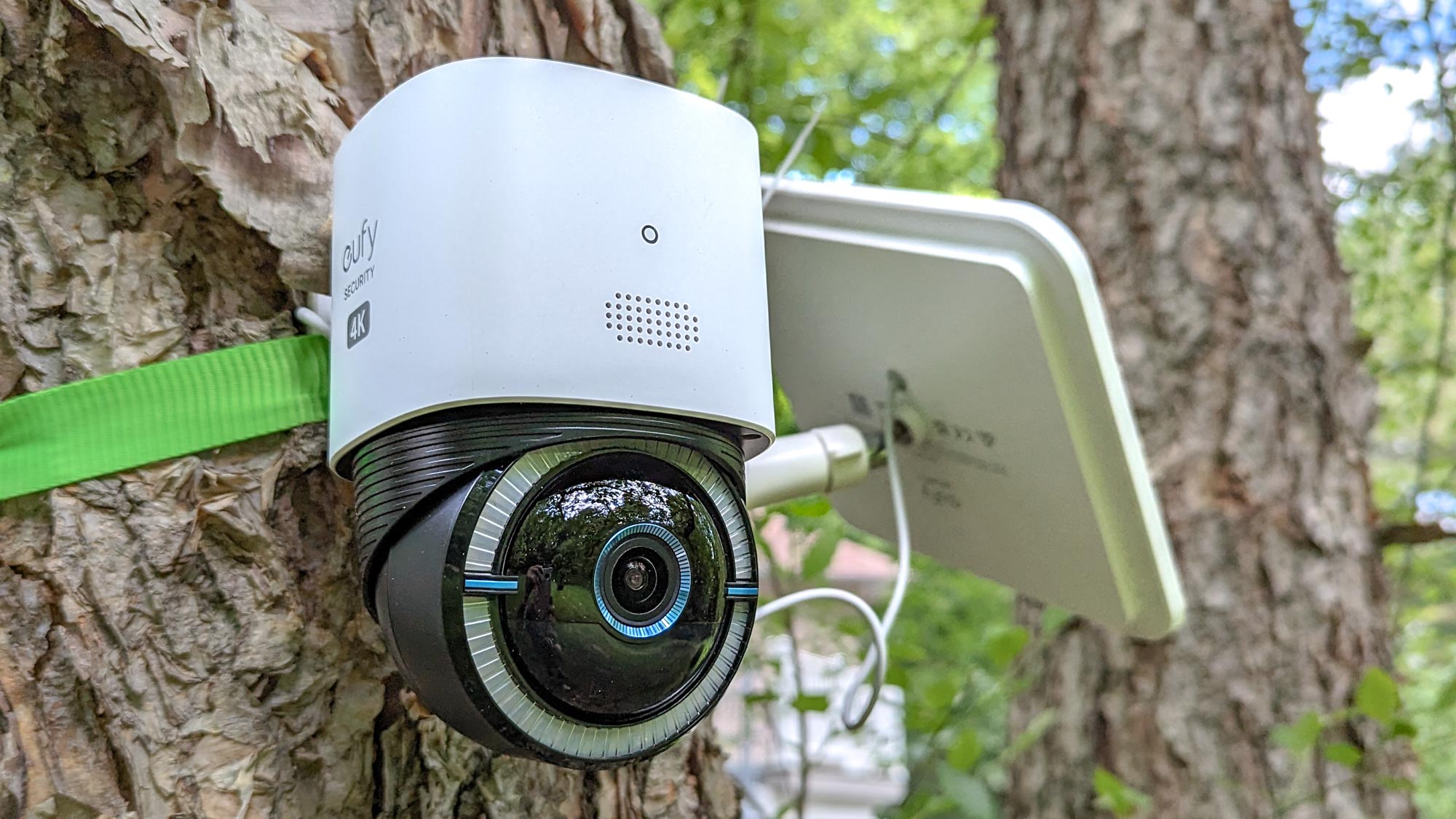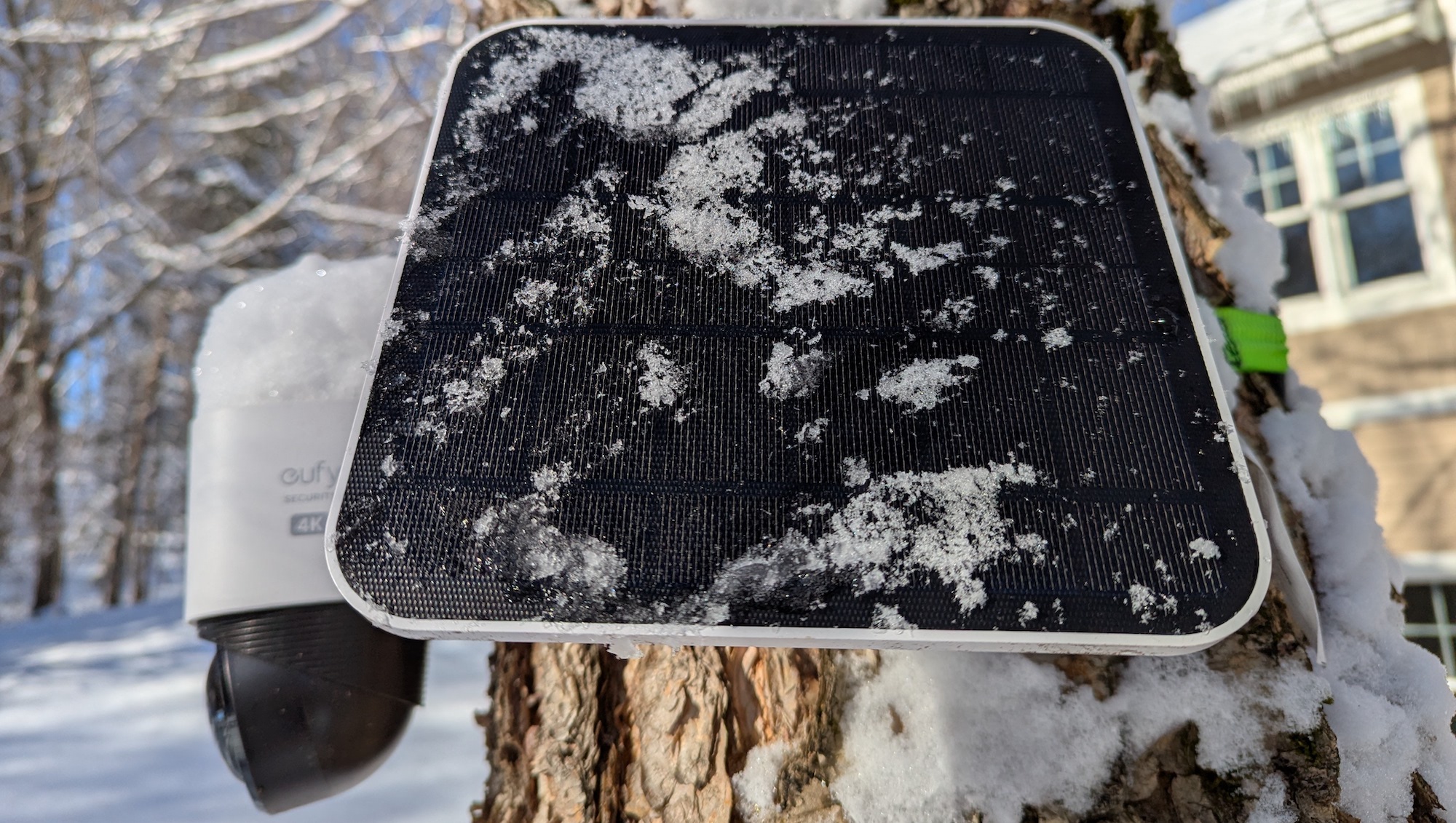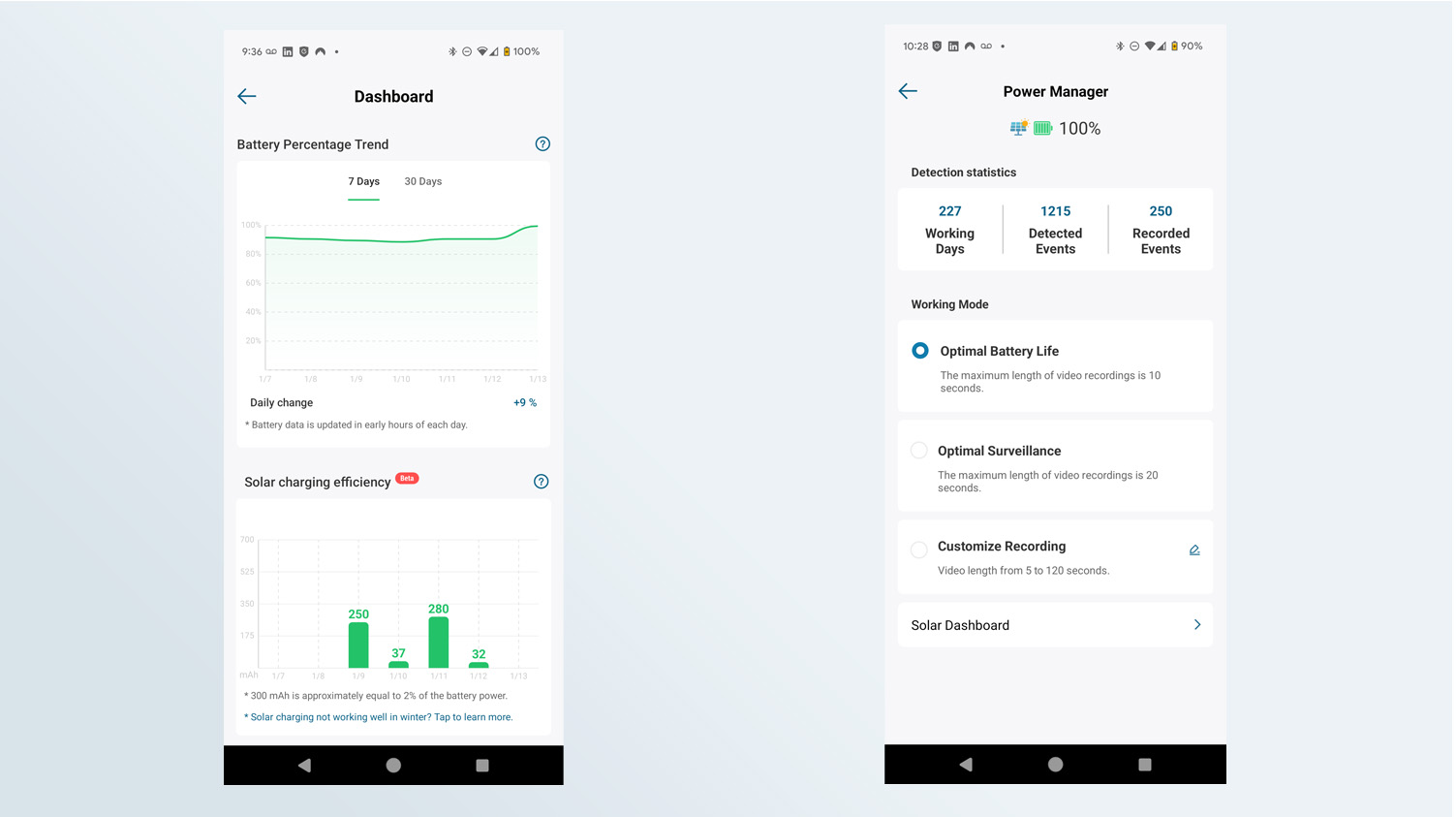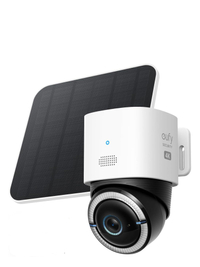I’ve been using this solar-powered security camera for 7 months — here’s what I like and what I don't
The Eufy 4G LTE camera has its quirks but continues to amaze me

When I reviewed the Eufy 4G LTE Cam S330, I was impressed with the camera’s excellent 4K video, bright spotlight, and the fact that it could be mounted just about anywhere, thanks to its solar panel and 4G LTE connection. It’s no wonder that it made the list of the best home security cameras.
However, when I tested it, the temperatures were in the 80s with long sunny summer days, perfect weather for the outdoor camera’s solar panel to keep its battery topped off at full capacity. I thought, however, as soon as winter came with overcast skies, short days and freezing temperatures, things would change for the worse with the battery not keeping up.
A chance to revisit the 4G LTE Cam S330 seven months later in the dead of winter shows how wrong and right I’ve been. Here are two things I really like about the camera, and one thing I wish could be better.
The Eufy 4G LTE Cam S330 features a 4K camera that can rotate 340 degrees and tilt 70 degrees, 4G LTE and Wi-Fi, and a microSD card slot for local storage. It has a 9,400 mAh battery that can be recharged via the included solar panel. Note that you'll need to pay a monthly subscription for LTE service.
The solar panel is great at keeping the battery charged
I set up the 4G LTE Cam S330 behind my house to keep an eye out for intruders, wildlife and the first signs of a zombie apocalypse. The camera catches all the action, and I check in to watch the videos daily – often several times a day – with the Eufy Security app. This drains the battery, particularly when I use the camera’s tilt and pan motors to aim it or at night when the camera’s spotlight illuminates its field of view.

Over the last seven months, I’ve occasionally brushed leaves and snow off the solar panel so that it can take in the sun’s rays. Meanwhile, the app’s Solar Charging Efficiency screen shows how well the solar panel and the camera’s 9,400milliamp hour (mah) lithium battery have worked together. The bar graph shows that on a cloudy day, the solar panel adds about 20mah of charge while a bright sunny day can boost the battery by 280mah. About 300mah corresponds to a 2 percent increase in charge level, according to Eufy’s engineers.
It all adds up to a full or nearly full battery pack whenever I check. This makes the 4G LTE Cam S330 camera the closest thing to a self-powered camera I’ve seen. Regardless of how cold or overcast it’s been, the app’s Power Manager has shown that the battery was at or near 100 percent.

Part of this is the result of using the cam’s Optimal Battery Life setting, which limits recordings – and the power needed – to 10 seconds. By contrast, the camera’s Optimal Surveillance setting’s 20 second clips are more profligate with the battery. There’s also the Customize Recording option to create clips of between 5 seconds and 2 minutes.
Sign up to get the BEST of Tom's Guide direct to your inbox.
Get instant access to breaking news, the hottest reviews, great deals and helpful tips.
So far, there have been more than 250 events recorded with the camera saving the clips on the S330’s micro-SD card rather than continually transmitting them to the cloud. This further reduces the battery drain. After seeing the app’s thumbnail preview, I can transfer it to my phone or disregard it. Unfortunately, the app keeps asking me to format the camera’s storage card, effectively erasing its contents. I’ve done my best to ignore this quirk.
Video still impresses
The S330’s recordings are better than I expected with sharp and detailed daytime 3840 x 2160 streams, although there’s an HD option that uses even less power. In addition to lifelike audio of the wind blowing and birds singing, the camera’s color night vision is surprisingly good. Day or night, the videos clearly show deer, turkeys, raccoons or me raking leaves. So far, no zombies.
At a modest 15 frames per second, the video stream is enough to catch the action and its 138 degree field of view covers my home’s not-quite back forty. Its full frame landscape view can be stunning during a sunset or snowstorm. Sometimes a closer look is necessary, as when a flock of turkeys were feeding at the hill’s bottom. I pinched the screen to use the S330’s 8X digital zoom and see them close up.
I wish its LTE connection were faster
The best part is that while it can connect over Wi-Fi, the Eufy 4G LTE Cam S330 doesn’t have to. As its name implies, the camera has 4G mobile phone hardware built in, making it the closest thing to an autonomous camera as exists today. Set up outside my home’s Wi-Fi network, it’s been using the T-Mobile network, where it can take 15 to 20 seconds to connect and start transmitting video to my phone.
That’s tolerable, but I get impatient and wish it would connect quicker. If the 4G LTE Cam S330 had a 5G mobile data option, the video could move faster and more securely. It might mean that the camera would use more precious battery power than the 4G model but 5G’s lower latency and ability to squeeze more data into transmissions might even things out, allowing the battery to last just as long.
Bottom line
Having used it for more than half a year, I can say that the Eufy 4G LTE Cam S330 is the best outdoor security camera, especially for those who need something that’s not tethered to an outlet or your Wi-Fi. While I wish the camera would connect over the newer and faster 5G mobile data network, its videos can't be beat and the S330's solar panel and battery can keep it powered through thick and thin.
More from Tom's Guide
Brian Nadel is a freelance writer and editor who specializes in technology reporting and reviewing. He works out of the suburban New York City area and has covered topics from nuclear power plants and Wi-Fi routers to cars and tablets. The former editor-in-chief of Mobile Computing and Communications, Nadel is the recipient of the TransPacific Writing Award.





